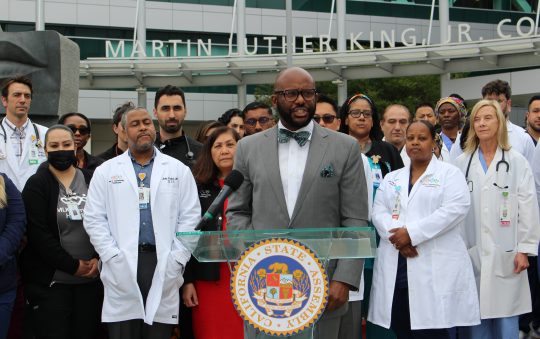
You’re seeing more and more pediatricians and influential emergency medicine providers, begging for more support and better resources as they come across children and teenagers with mental health problems and concerns.
According to the American Academy of Pediatrics, every year approximately half a million children with behavioral or mental health conditions are brought in and seen by an emergency department. These concerns are overwhelming emergency departments nationwide and pose a real problem for medical officials.
Dr. Mohsen Saidinejad, professor of emergency medicine and pediatrics at the David Geffen School of Medicine at UCLA, recently stated that some of the top medical groups in the country are calling for local communities to help increase the access and resources to mental health services before any emergency care has to be involved at all.
With the number of health conditions that are evaluated in emergency departments having risen tremendously over the past decade, medical groups and officials are urging to find a solution as quickly as possible. Dr. Willough Jenkins, medical director of Emergency and Consultation Liaison Psychiatry at Rady Children’s Hospital in San Diego, has an up close perspective on this situation. She stated that the number of kids seeking psychiatric emergency care just in her ER alone has grown from approximately 30 a month in recent years to 30 a day.
Related Stories
Ultimate Tennis Showdown Brings A New Twist To Tennis
Get Ready for 18th Annual Taste of Soul Family Festival
“The volume is astronomical, and I don’t know that people fully understand how many people are struggling,” said Jenkins.
“Children as young as six years old are coming in often dealing with mental health issues and often talking about suicide. This crisis is only getting worse,” she added.
For many years, people had the notion that mental, physical, and emotional health problems are developed once a child starts becoming a little older. But recent studies have been showing that over the years, the age of children needing assistance has lowered, especially after the impact that the pandemic has had on our country. Children are living and learning differently and are socially being introduced to methods and styles of education that they were not previously aligned to before the pandemic.
It is no secret that, since the pandemic, emergency departments are understaffed and under-resourced. But the constant urge to receive better help and resources has been at the top of the priority list for a lot of medical officials.
Children and adolescents deserve the best care whenever they go to an emergency department during a physical, emotional or mental crisis as anyone else does. A lack of resources makes matters more difficult, but health officials say that they are doing whatever it takes to find better solutions for the youth.
If you or someone you know is in crisis, call 988 to reach the suicide and crisis lifeline, or visit speaking of suicide.com/resources for additional resources.







